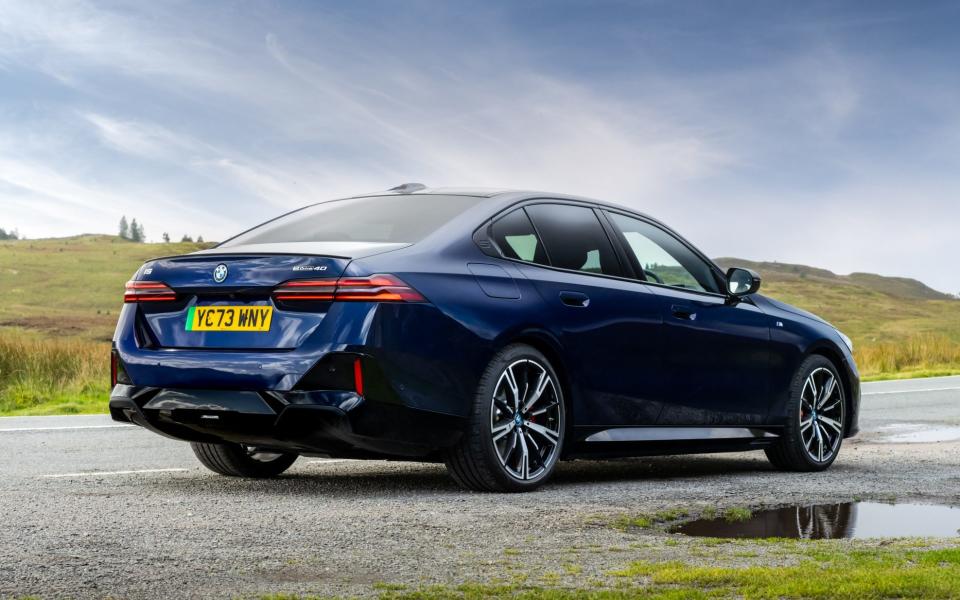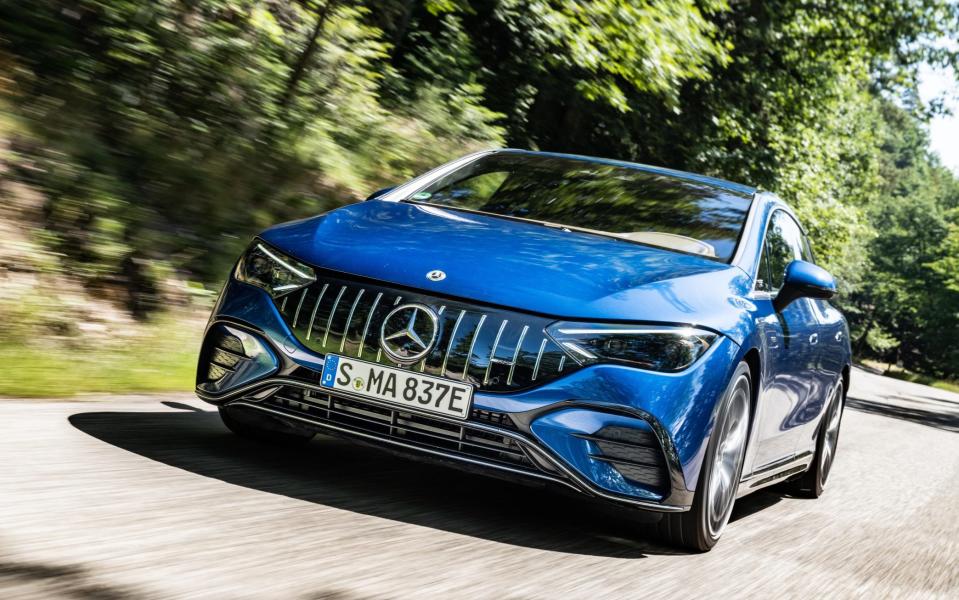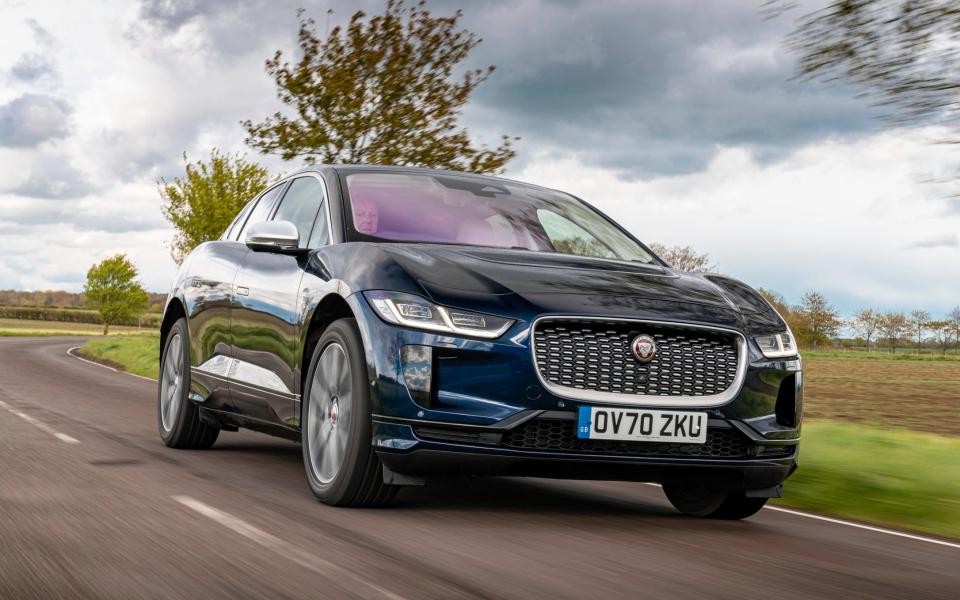BMW i5 review: a class act in so many ways, yet still flawed

Not being part of the boss class, at whom the BMW 5 Series is aimed, the only people I know who drive a 5 Series are the police. And it was for that reason that I pondered the wisdom of driving £76,200’s worth of BMW i5 eDrive40 M Sport Pro four-door saloon, with a litany of extras that raised the price to £94,375. Ouch, this isn’t a car you leave alone at the side of a busy road, or cram into the pub car park tight alongside that battered Nissan.
“And do business users take their dogs?” I could hear Herbie the Labrador thinking out loud. Just how do muddy paws cope with Black Veganza upholstery and the £5,000 Comfort pack?
Moreover, does a trip to the West Country actually require a 335bhp, 295lb ft all-electric drivetrain giving a top speed of 120mph and 0-62mph in 6.0 seconds?

This is, of course, the eighth generation of BMW’s business-class express, code named G60 and bearing a remarkable resemblance to – and sharing a lot of technology (along with BMW’s CLAR chassis platform) with – the outgoing G30 seventh generation. Up until recently, most 5 Series drivers enjoyed their cars in base specification with a 2.0-litre turbodiesel under the bonnet – times though, are a changing…
Now, BMW has to offer mild petrol-electric hybrids, full hybrids, plug-in hybrids and battery-electric drivetrains, though there’ll be no diesels with this generation. This BMW i5 eDrive40 is currently the “starter EV” in the range, with a single motor driving the rear wheels, but next year it will be joined by a more powerful i5 M60 version and a 700bhp plug-in hybrid (PHEV) M5 model, which will be just thing to save the planet with.

Digital presence
Obviously, the digital presence of the new car is considered just as important as its dynamics and comfort these days. Software is the new frontier in premium cars, and somewhere out there are a load of potential buyers looking for a big, four-door saloon, with more computing power than an entire sales floor of PC World.
As such, there’s all sorts going on behind the new curved digital instrument binnacle and the big landscape touch screen in the centre. A lot of it I never found, including a traffic-light app that reads and responds to traffic lights.
The stuff I did find and use wasn’t desperately good. Waze had identified a road closure over 100 miles away and detoured us around it while the BMW satnav was still skipping along into the back of the jam.

The Highways app allows a limited form of self-driving (to SAE level 3) on certain mapped and approved roads, and is supposed to change lanes with a glance in the mirror from the driver, but the cruise control isn’t so smart and even with the indicator on, it slows as it approaches the overtaken vehicle. Rival systems typically accelerate gently at this point, which makes progress a lot smoother.
The gesture control – where you can skip tracks, change the volume and more with a wave of the hand in front of the screen – made me look as though I was conducting Mozart’s Requiem, and the voice control didn’t recognise my accent. To be fair, not many voice controls do.
Get in and drive
After the closed road debacle, the satnav had a vendetta out for Waze and refused to link up with my iPhone.
Still, I got on and drove, which is the second most important thing in this new Beemer after its software. With upper-and-lower wishbone suspension and steel springs at the front and a five-link independent rear with air springing and damping at the rear, it’s a sophisticated set-up, but there’s rather a lot of this car to keep off the ground and corner.
It’s 5,060mm long (the first time a 5 Series has broken the five-metre barrier) 2,156mm wide with the mirrors, 1,515mm high, and weighs 2,205kg – 425kg more than the standard, £51,000 petrol 520i.

Stuffed between the optional 21-inch (£3,000) wheels is an 84.4kWh gross, 81.2kWh net lithium-ion NMC battery, which gives a quoted WLTP range of between 312 and 356 miles, though with these wheels and tyres it’ll be more like the former.
Efficiency is quoted at between 3.3 and 3.8 miles per kWh of battery capacity and BMW has included a host of active aerodynamic gizmos to ensure that at high speeds efficiency should not fall too far, including the air-flap control on the kidney grille that is claimed to increase electric range by up to 16 miles.
Yet on a 300-mile journey of mainly dual carriageway and motorway at a rock-steady 70mph, we averaged a not-particularly-impressive 2.8m/kWh, which gives a range of just 227 miles. Creeping back home on A-roads, the efficiency rose to 3m/kWh for a range of 244 miles; still a long way off that published WLTP range.

Despite the proclamations of just how easy it is to access 100kW-plus DC charge stations on the motorway, we picked badly. All were 50kW, not all were working and all were charging at 78p per kW, which meant the journey cost about £90. The same journey in my Honda Civic Type R (a car not known for its frugality) would have cost under £60.
But my old Type R wouldn’t match the BMW’s ride quality in a month of Sundays. While, in truth, this car is far too modified to accommodate battery power to be really called a 5 Series, it certainly rides and handles like one. The way those big wheels traverse bumps and sharp potholes is rather uncanny and the long-wave ride over bigger undulations is an example to pretty much every other battery car maker.
Hiding an extra half tonne from the steering and extreme handling is more difficult. There’s plenty of grip, of course, but the way the big BMW pushes into a turn doesn’t feel particularly like the Munich company’s flagship and the steering – while accurate – feels inert regardless of which driver setting you’ve dialled in.
The Telegraph verdict
So, you sit back in your comfortable armchair and watch the range fall as not enough miles roll under the wheels, preparing for your next encounter with a UK charging network that, at times, feels like meeting a 17th-century highwayman.
Despite BMW’s best efforts and its undoubted qualities of ride, handling and snazzy cabin, slotting a battery and a handful of computers into the 5 Series feels, at times, more like a metaphor for what isn’t right about the headlong rush into battery electric drivetrains and the new digital car, than it does a modern, low-carbon take on a legendary business saloon.
The facts
On test: BMW i5 eDrive40 M Sport Pro
Body style: executive battery electric saloon
On sale: Now
How much? From £76,200, as tested £94,375
How fast? Top speed 120mph, 0-62mph in 6sec
Maximum power/torque: 335bhp/295lb
How economical? 3.7m/kWh (WLTP combined), on test 3.0m/kWh
Electric powertrain: 84.4kWh (gross), 81.2kWh net lithium-ion NMC battery; with single synchronous AC electric motor, rear-wheel drive
Electric range: 312-357miles (WLTP combined), 261 miles on test
Charge times: 20-80 per cent charge on a 205kW DC charger 16 minutes, on a 50kW charger the same charge takes 1hr 5mins, and 10-100 per cent on a 7.4kW wall box in 12hrs
CO2 emissions: 0g/km (tailpipe), 30.5g/km (well-to-wheels)
VED: £0
Warranty: 3yrs/unlimited mileage on the car and 8yrs/80,000 miles on the battery.
The rivals
Mercedes-Benz EQE from £67,950
It’s had some bad press in the UK, but how much you’ll like it very much depends on what spec you buy and how much you spend. At its best the EQE is a wafting, gorgeous 4,863mm long hatchback with a lovely cabin available with two- and four-wheel drive.

Jaguar I-Pace from £69,425
Now five years old, but Ian Callum’s 2019 European Car of the Year is still a looker, though not the most efficient device with its 90kWh battery giving considerably less than the published 292-mile range in the hands of owners. Yet, this 4,682mm-long SUV handles and rides as well as anything else on the market.


